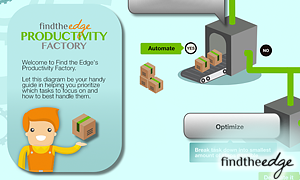Check out how to create engaging & magnetic content even if you are a complete novice!
Want to embed this video on your site? Copy the code below:
<iframe width="560" height="315" src="http://www.youtube.com/embed/I3yp_oQ_qfc" frameborder="0" allowfullscreen></iframe>
People have been using persuasive writing techniques to create engaging, magnetic content for centuries, and although many of the basic principles are similar, the techniques required to get results have had to evolve.
It's important for content to be easy to absorb these days, as generally attention spans have shrunken across the globe. You'd be surprised how many big companies still fall down in this area.Taking the time to write engaging content will have two very positive effects for your business:
- People will read your content to the end, and be more likely to take action right away. Alternatively, they may start following you and take action later, resulting in future leads.
- Readers are much more likely to share content with their friends if it's interesting and useful. This is how good content goes viral, and creates multiple new followers and leads.
Keep it Simple, Clear and Concise
You should never worry about patronising people. No one will ever complain that your writing is too easy to understand.Avoid rambling, and be sure to keep it laser-targeted. Remember they are not the expert (you are), so make sure what you're writing doesn't go over their heads or you'll lose them forever. First impressions and all that…
What’s In It For Me?
 Everyone wants to know ‘What’s In It For Me?' (WIIFM) when they're reading content. That's why you need to write it as if you are talking to one specific person.Talking about yourself will not grab their attention, and is likely to turn people off. You need to let them know exactly why they should pay attention to what you have to say.WIIFM is something you should imprint on your memory and never forget. It’s a crucial component of every good marketer’s toolkit.
Everyone wants to know ‘What’s In It For Me?' (WIIFM) when they're reading content. That's why you need to write it as if you are talking to one specific person.Talking about yourself will not grab their attention, and is likely to turn people off. You need to let them know exactly why they should pay attention to what you have to say.WIIFM is something you should imprint on your memory and never forget. It’s a crucial component of every good marketer’s toolkit.
Write in the Second Person
Most people are familiar with first and third person styles, but what about the second?Simply put, the second person is when you write directly to your reader using ‘you' and ‘your' (like I am doing here).It is an engaging way to write, and very effective for sales copy.
Know the Three Emotional Hot Buttons
Research will help you to understand what questions your target market are likely to be asking when reading your copy. This gives you the opportunity to make use of the three emotional hot buttons to subtly engage your readers:1. Pain – The first and most powerful hot button is Pain. If you look at most political campaigns, and a high proportion of TV advertisements, they are mostly based around fear. That’s because people will do anything to avoid pain.The trick is to paint a picture of their current situation, find the pain, and then highlight it by pointing out the problem and providing an amazing solution to it. Solving the problem will paint you as their knight in shining armour.2. Pleasure – As I said earlier, people want to know what’s in it for them, so you need to find their pleasure points.Talking about features will only bore people if you don’t mention the benefits they provide. If you were a car salesman, and you were selling the feature of ‘air conditioning,' then the benefits are that it will keep the customer perfectly cool on a hot day.So to enhance that message you could say: “The car has a smooth climate control, so you can keep the interior at a cool and even temperature, even on the stickiest of hot days.”3. Curiosity – The third emotional button is curiosity. I love to use this in headlinesMost TV programmes, including the news, will give you snippets of what's coming up later, or after the break. This is purely to hook your curiosity levels, and push you to keep on watching. They give you an itch that needs scratching.In Neuro-Linguistic Programing (NLP) terms, it’s what’s known as ‘opening a Loop’. This basically means you've opened up a thought loop for the reader. If it’s good enough, their curiosity will eat away at them until they have closed that loop.Curiosity is best employed in your headlines and towards the end of paragraphs. Used effectively, it will compel people to read on. If you are writing a book, use it towards the end of the chapter. No book will be ‘unputdownable' if it fails to make effective use of curiosity.
Question Your Content
- What? – Answer the “what” question. What exactly are you talking about? What are you selling, and what is the message you want readers to take away?
- Why? Why is your information so important for readers? If it isn't, you need to rewrite.
- How? Does your content answer how the process works? This will keep the analytical readers happy.
- Even if… Answer any possible objections within your content, for example, ‘Even if you have no technical skill at all, you will be able to use this product with ease.'
Give Proof
Demonstrate credibility by giving proof. You can do this using statistics, expert references, testimonials or any other credible information source. It doesn't matter whether this is your own, or someone else’s published work.Remember to cite your sources if they are not your own, and be wary of plagiarism.
Sum Everything Up
Be assertive and authoritative by going full circle and demonstrating how you have fulfilled their promise at the end of the copy. Allow me to demonstrate…So that’s how you can learn to write magnetic copy easily. Remember these key points:
- Keep it simple clear and concise throughout
- WIIFM: What’s in it for me (as your reader)
- Use the three emotional hot buttons – pain, pleasure and curiosity
- Don't forget to mention the benefits when talking about features
- Answer the questions: “what?”, “why?” and “how?” within copy. Also make sure you cover objections using, “even if…”
- Give proof wherever possible
- Sum everything up at the end





